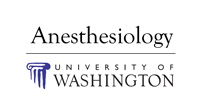Pearl #1
Intubation is sexy, but mask ventilation is life saving.
Everyone wants to be the person who saves the day by placing the endotracheal tube. For many healthcare providers, their view of anesthesiologists is limited to the emergent intubation. Probably because of this, the image of an anesthesiologist is irrevocably tied to the performance of laryngoscopy and intubation.
The truth, however, is that in most cases, a patient does not die from the absence of an endotracheal tube. Hypoxia and hypercarbic acidosis are the big villians. Lack of oxygen and large changes in pH will acutely disrupt normal cellular metabolism and protein function leading irreversible tissue damage and ultimately death.
Therefore, the restoration of ventilation and oxygenation is the most critical step. Sometimes simple airway maneuvers such as jaw-thrust and chin-tilt are all that are necessary to improve the situation of a patient that is making respiratory effort, but obstructing their airway. Sometimes mask ventilation with positive-pressure and supplemental oxygen is necessary if the patient is not making sufficient respiratory effort. Like any other technical skill, mask ventilation does have a learning curve. I would suggest coming to the OR for an anesthesiology rotation to help pick up tips and hone your skills.
There are certain situations where the tube is the answer for airway protection, but the take-home message is that you can save a life by performing simple interventions which buy time to prepare for intubation under more stable and controlled conditions.
Keep in mind that pearls are intended as pieces of alleged wisdom to help frame one's approach to certain situations. These bits of opinion should not replace sound medical evaluation/judgement, and are not applicable to every situation.
